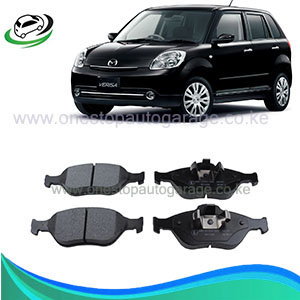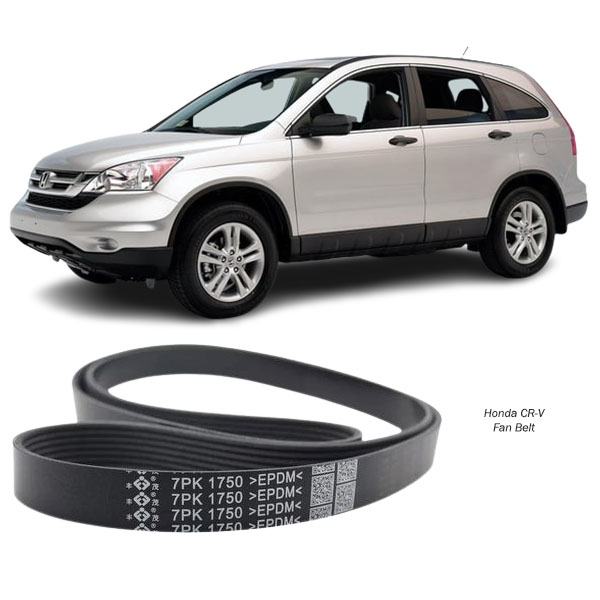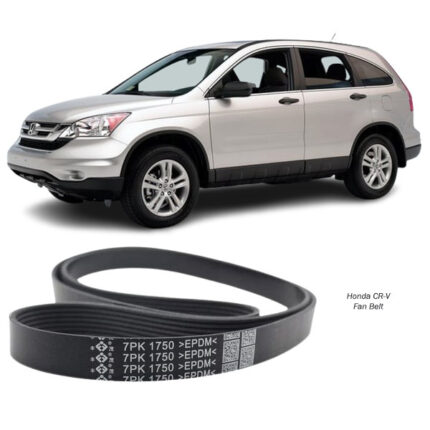-20%
Get Honda CR-V Fan Belt 7PK1750 in Kenya
The fan belt, also known as the serpentine belt or drive belt, is an essential component in your vehicle’s engine. It drives multiple engine accessories, such as the alternator, power steering pump, air conditioning compressor, and water pump. The 7PK1750 fan belt is a specific type used in various vehicles, particularly BMW, Toyota, Mercedes-Benz, and other high-performance cars.
A well-maintained fan belt ensures smooth engine operation, prevents overheating, and supports optimal power transmission to vital engine components. In this guide, we’ll discuss everything you need to know about the 7PK1750 fan belt, including its function, specifications, signs of failure, replacement, and maintenance tips.
Understanding the 7PK1750 Fan Belt
The 7PK1750 fan belt follows a specific naming convention used in the automotive industry:
7PK – Means the belt has 7 ribs for enhanced grip and efficiency.
1750 – Refers to the belt’s length of 1750mm.
This belt is commonly used in modern vehicles with multiple pulleys that drive different engine components.
Functions of the Fan Belt
The fan belt is a multi-purpose drive belt that controls key engine accessories:
Drives the Alternator
The alternator generates electricity to charge the battery and power electrical components. The fan belt keeps it spinning efficiently.
Powers the Air Conditioning (A/C) Compressor
The A/C compressor requires belt-driven power to compress refrigerant and cool the cabin.
Operates the Power Steering Pump
The power steering pump uses hydraulic pressure to make steering smooth and effortless. A worn fan belt can make steering stiff and difficult.
Drives the Water Pump
The water pump circulates coolant through the engine and radiator, preventing overheating.
Runs the Cooling Fan (in Some Vehicles)
Some vehicles use the fan belt to power the radiator cooling fan, which regulates engine temperature.
Symptoms of a Worn or Failing Fan Belt
Over time, the fan belt wears out due to heat, friction, and constant tension. Here are the key warning signs:
Squealing or Chirping Noises
A loud, high-pitched squealing sound when starting the engine or accelerating could mean the belt is:
Worn out
Loose or misaligned
Contaminated with oil or coolant
Cracks, Fraying, or Glazing on the Belt
Inspect the belt visually—if you see cracks, fraying edges, or a shiny (glazed) surface, it’s time for a replacement.
Power Steering or A/C Malfunction
A slipping or broken belt can cause the power steering and air conditioning to stop working.
Battery Warning Light on Dashboard
Since the fan belt drives the alternator, a failing belt can cause charging issues, leading to a dead battery.
Engine Overheating
If the belt breaks and the water pump stops running, the engine may overheat rapidly.
Vibrations or Slipping Feeling
A loose belt can cause excessive engine vibration or a noticeable loss of performance.
Causes of Fan Belt Failure
The fan belt can fail due to several reasons, including:
Age & Wear – Over time, the rubber material degrades.
Incorrect Belt Tension – Too loose or too tight can lead to slipping or premature wear.
Oil or Coolant Contamination – Fluids can weaken the belt, causing it to crack and slip.
Damaged Pulleys or Tensioners – A faulty idler pulley or tensioner can put excessive strain on the belt.
Extreme Temperature Changes – Heat causes rubber expansion, while cold causes contraction, leading to wear.
How to Replace the 7PK1750 Fan Belt
Tools Needed:
Socket Wrench Set – To remove tensioner bolts.
Breaker Bar or Belt Tensioner Tool – For loosening the belt tensioner.
New 7PK1750 Belt – Ensure you have the correct size and brand.
Gloves & Safety Glasses – Protects your hands and eyes.
Step-by-Step Replacement Guide:
Turn Off the Engine & Disconnect the Battery
This prevents accidental injury while working near moving parts.
Locate the Belt Routing Diagram
Most vehicles have a belt routing sticker under the hood. If not, take a photo of the belt’s path before removal.
Loosen the Belt Tensioner
Use a breaker bar or wrench to rotate the tensioner and relieve tension.
Remove the Old Belt
Carefully slide the belt off the pulleys, checking for signs of uneven wear.
Install the New Belt
Route the 7PK1750 belt through the pulleys in the correct sequence.
Adjust Belt Tension & Double-Check Alignment
Ensure the belt is properly seated on each pulley and has the correct tension.
Start the Engine & Test for Noises
Listen for any squealing or misalignment issues.
Tip: Always inspect the idler pulley and tensioner for wear when replacing the belt!
How to Maintain Your Fan Belt for a Longer Lifespan
Inspect Every 20,000-30,000 km – Check for cracks and wear.
Replace Every 50,000-100,000 km – Prevents unexpected failures.
Avoid Oil & Coolant Spills – Clean any leaks immediately.
Check Belt Tension Regularly – A loose belt can cause slipping and wear.
Use High-Quality Belts – OEM or reputable aftermarket brands ensure durability.
Conclusion: Why the 7PK1750 Fan Belt is Essential
The 7PK1750 Fan Belt is a critical component in keeping your vehicle’s engine accessories running smoothly. A worn or broken fan belt can lead to power loss, overheating, and steering failure, making regular inspection and replacement essential.
If you notice squealing noises, steering problems, or overheating, check your belt!
Choosing high-quality belts ensures long-lasting performance and durability.
Regular maintenance and timely replacement can prevent costly engine damage.
Follow us on Facebook for more parts.





Reviews
Clear filtersThere are no reviews yet.